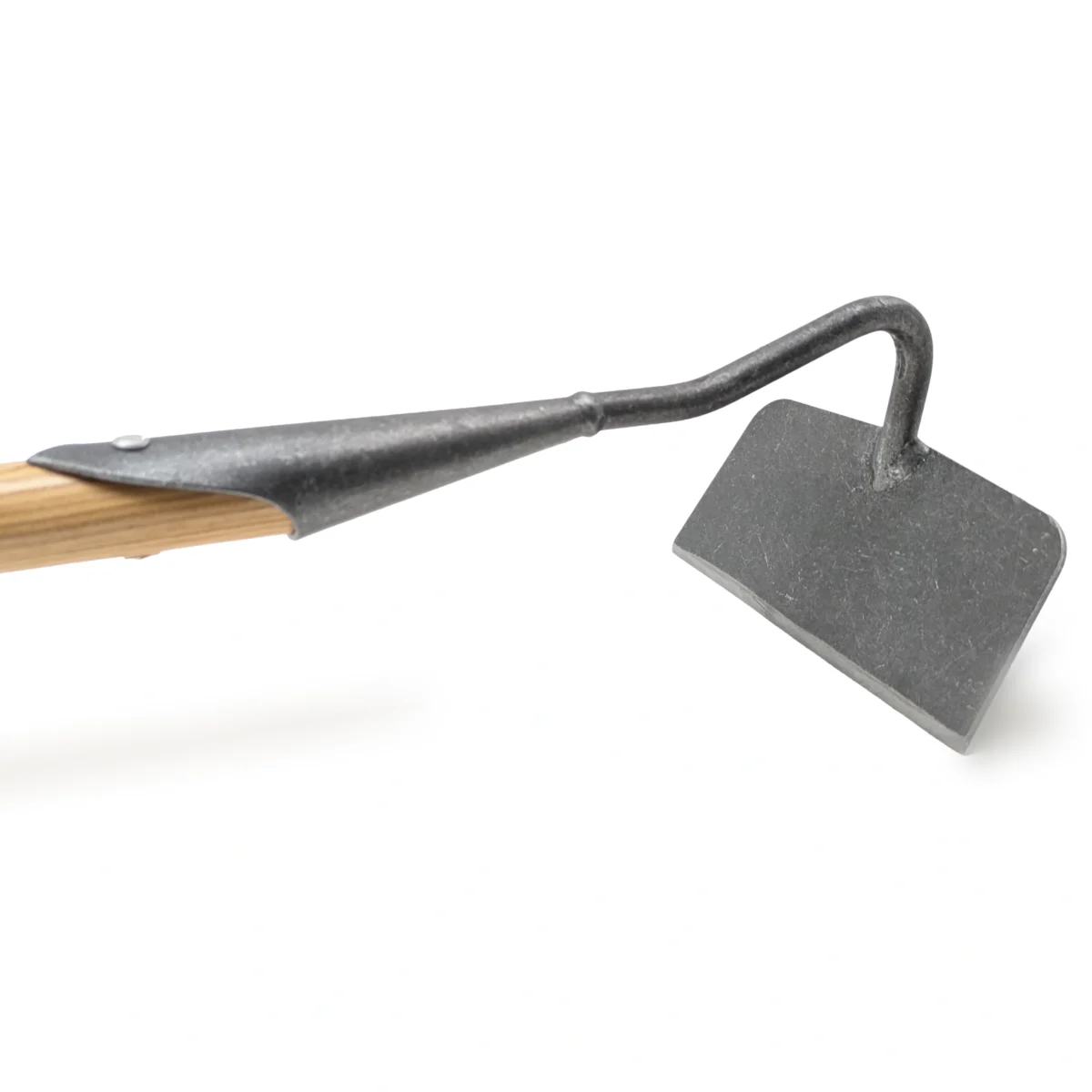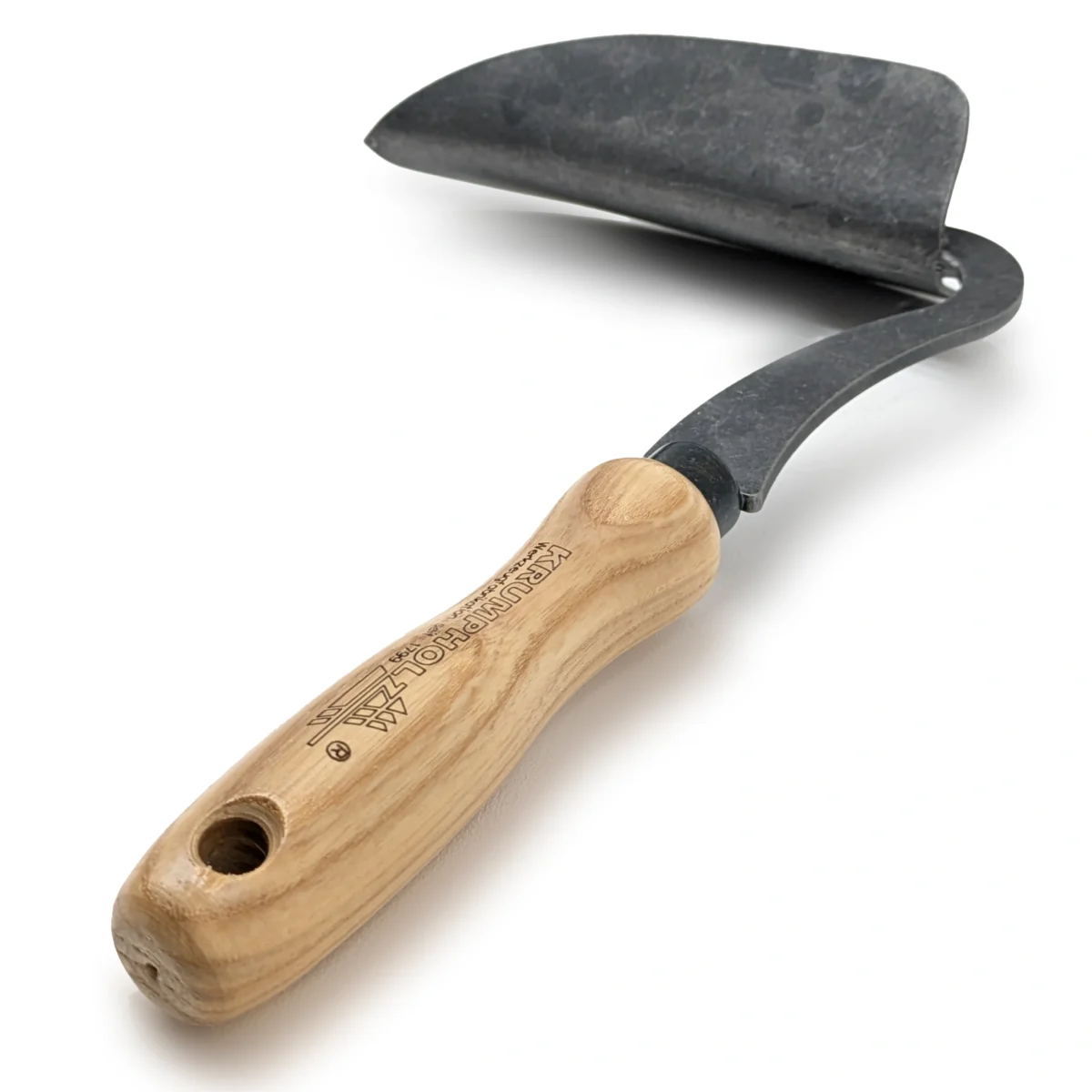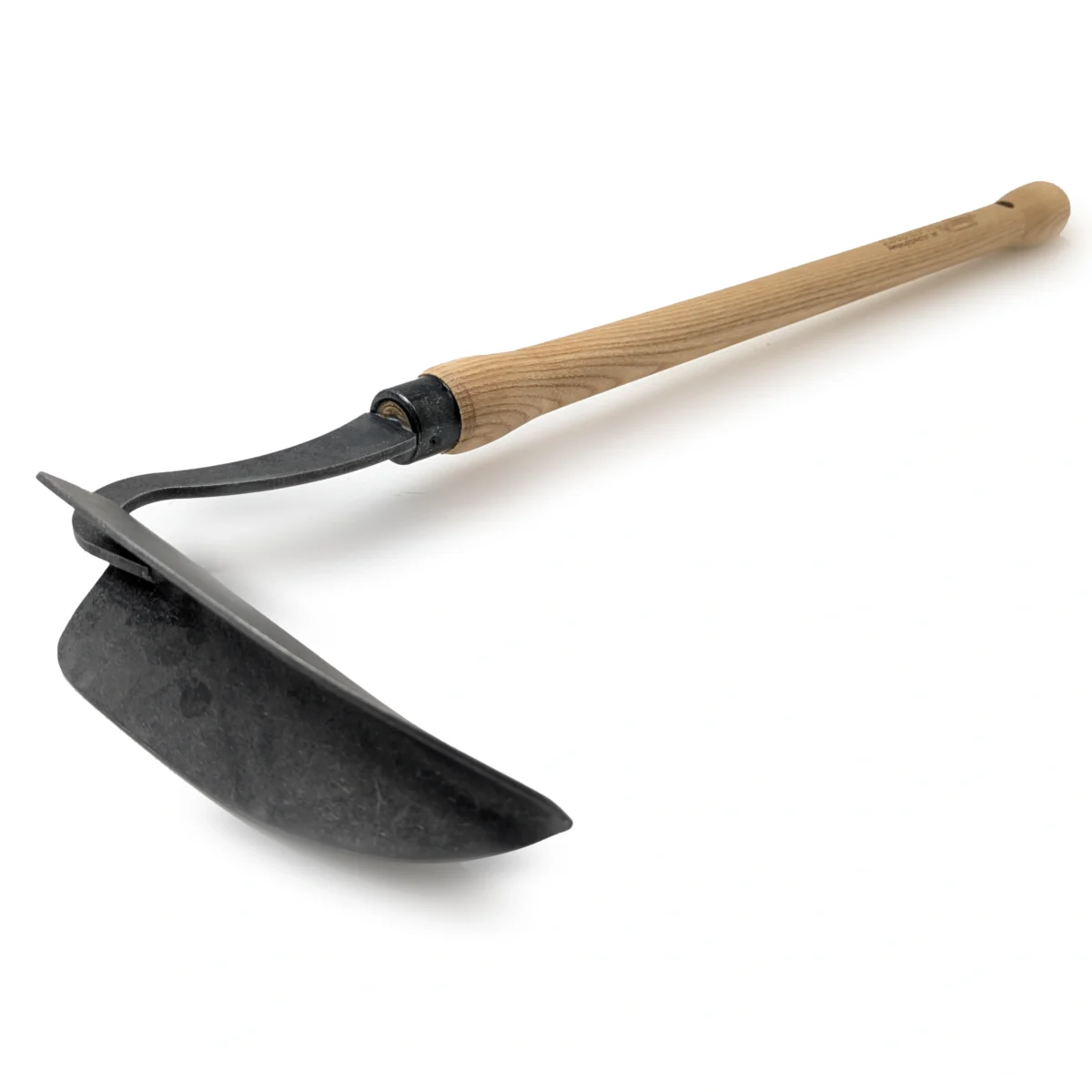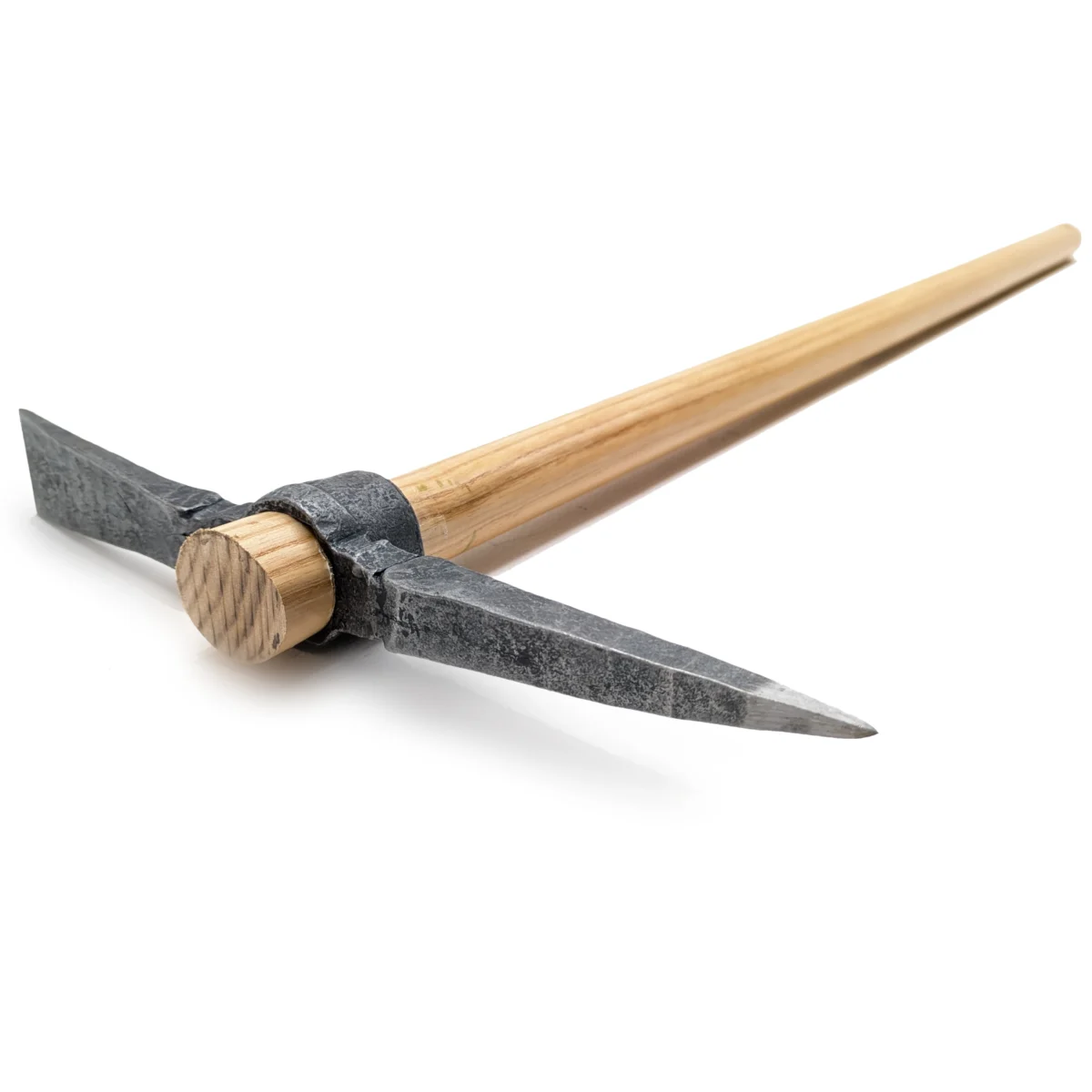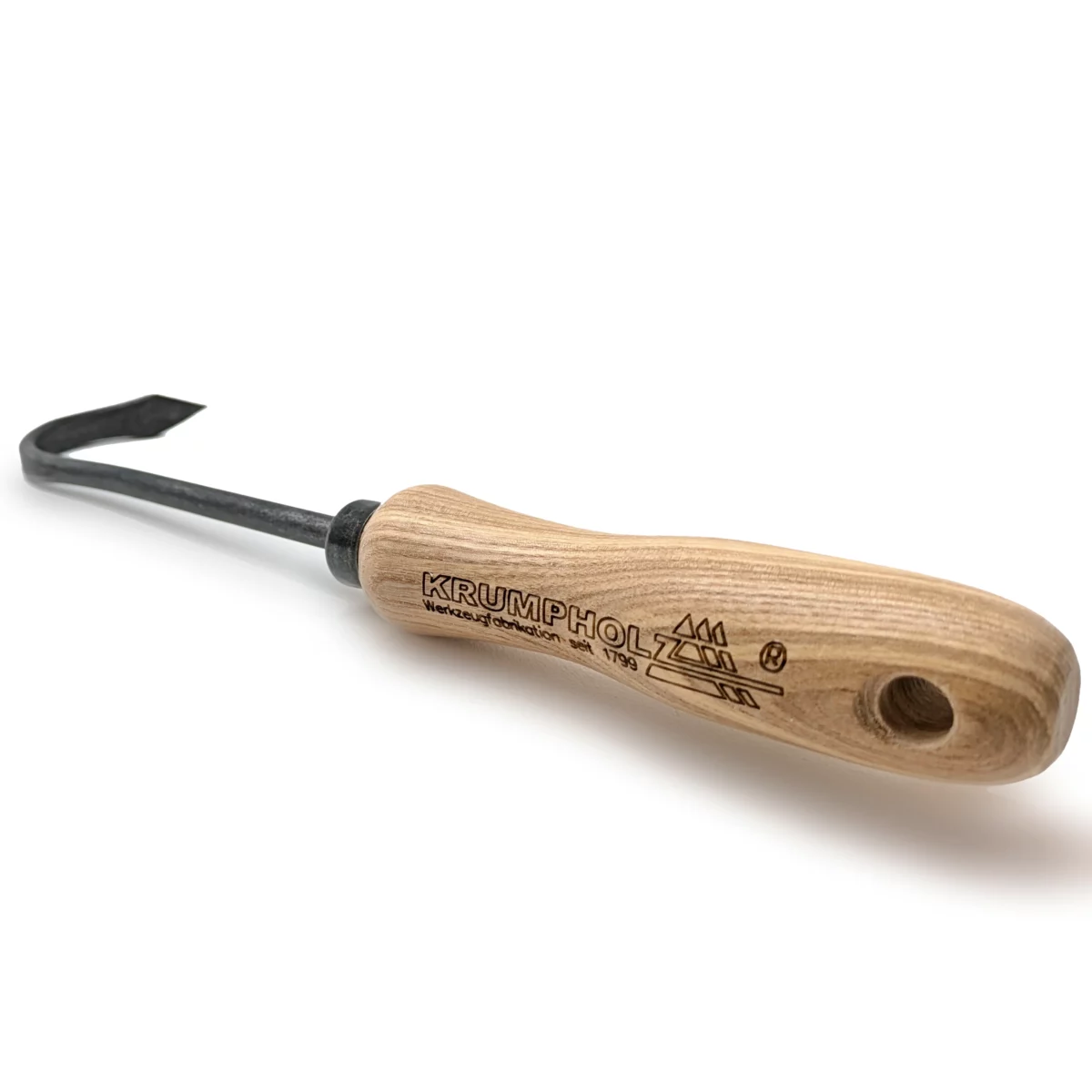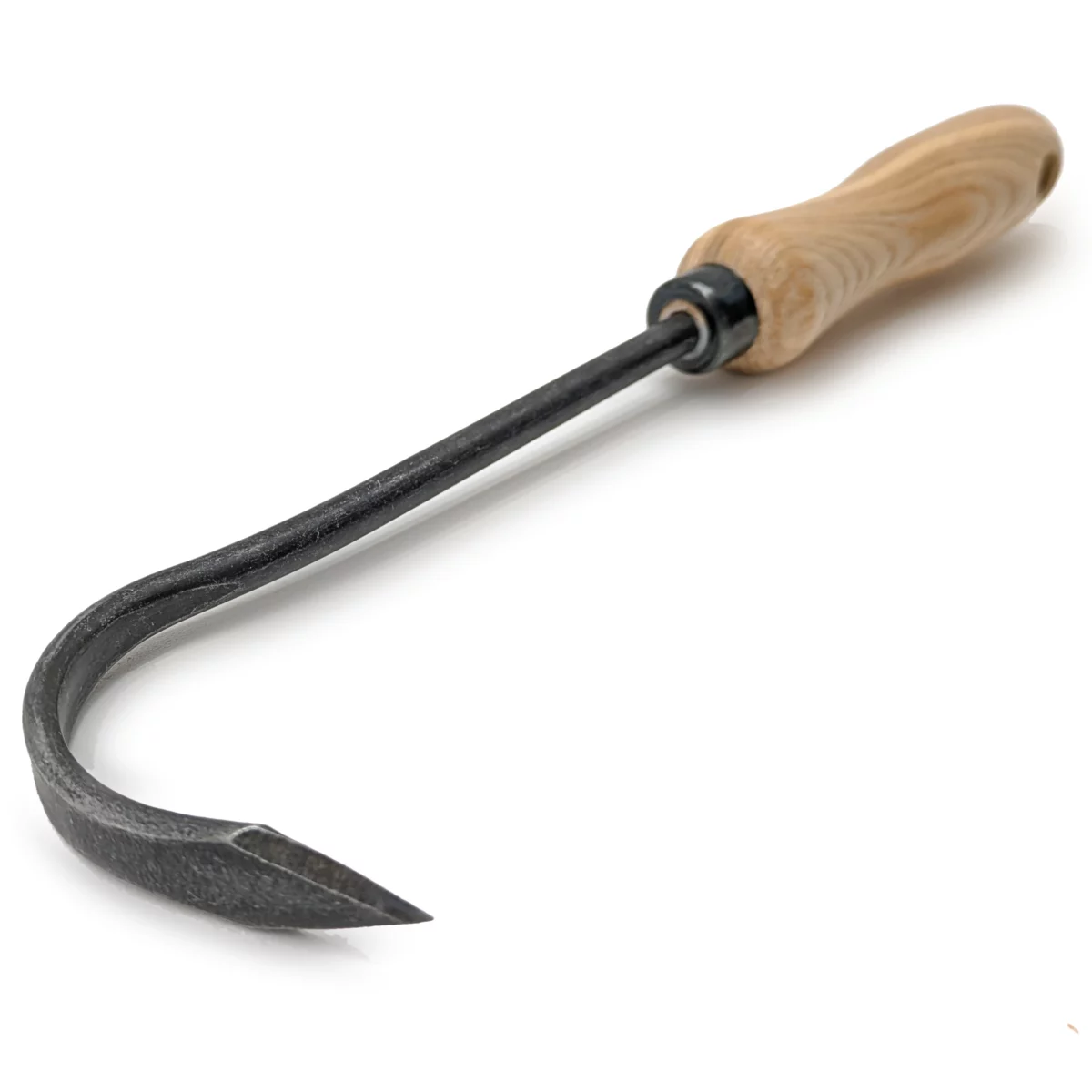Hoe application
Introduction
Hoes are indispensable tools in horticulture and gardening. They are used to loosen the soil, remove weeds, prepare planting holes, dig trenches or cut through roots. Choosing the right hoe and using it correctly can make gardening much easier and lead to better results.
Important aspects when using chopping
Handle length and comfort:
Make sure that the handle of the hoe fits well in your hand. The length of the handle depends on the function of the hoe. The handle of a cross hoe or point hoe is shorter than the handle of a bed hoe.
Handle lengths of just over one meter are ideal for cross or pointed hoes. The handle of a bed hoe should be approx. 130 to 150 cm long. Hand hoes usually have short handles of 35 – 40 cm.
Hoes with a round eye or rather a hoe with a handle that is attached with impact sleeves:
Hoes with a round eye: The handle of hoes with a round eye can be changed without tools. It is important that the hoe head is firmly and positively inserted to prevent wobbling or a loose hoe head.
Hoe with drive-in sleeves: Here the handle is attached with a wooden wedge and drive-in sleeves. The hoe head is attached to the handle from above and is firmly connected to it by a wooden wedge and drive-in sleeves. To replace the handle, it is necessary to drill relief holes in the driven-in wedge so that the head can be separated from the handle. If the head has loosened on the handle, it is usually sufficient to drive the drive-in sleeves deeper into the wedge with a hammer to stabilize the connection.
Conclusion: Both types of chopping work very well. We can recommend both mounting options without reservation.
Hoe in:
Insert hoe with round eye: Place the hoe head on the conical handle and push it to the thickest part of the handle. Then strike the handle with the hoe head firmly in a vertical direction onto a wooden board or beam lying on the ground. At a 90 degree angle from top to bottom with the hoe head pointing downwards.
When it hits the resistance, the hoe head connects positively with the handle. This should be repeated several times until the hoe head is firmly attached to the handle. The joint can be additionally strengthened by soaking the joint for a few minutes. The handle swells and the hoe head sits really firmly.
Secure the hoe with impact sleeves: Place the handle at a comfortable working height on a wooden beam or board. Place the eye of the hoe head on the handle. If necessary, slightly break the edges of the upper end of the stem with a cutter knife to make it easier to put the head on. Then turn the hoe over, place the head on the beam, and use a mallet to drive the handle straight in, piece by piece, until it is flush with the eye of the head. When the head is flush with the stem, drive in the wooden wedge and finally drive in the drive-in sleeves. If necessary, remove any protruding material from the wooden wedge.
Material of the hoe:
Head material: Hoe heads made of hardened carbon steel are durable and robust. The tough and hard steel can be easily resharpened and can also withstand hard impacts. Stainless steel heads are rustproof. However, the more brittle stainless steel breaks more easily than a carbon steel hoe head.
Handle material: Wooden handles are traditional and pleasant to handle. They are easy to recycle and do not cause any problematic waste at the end of their useful life like fiberglass handles, for example. A clear plea from us for the use of wooden handles. Here, the strong and elastic ash wood or hickory wood is a proven and well-functioning variant.
Maintenance and care:
Cleaning: Remove dirt and plant parts from the hoe after each use to prevent rusting.
Storage: Store the hoe in a dry and unheated place. Ideally, hang the hoe up to prevent moisture damage to the handle or hoe head. When stored in heated rooms, the stem dries out and loses elasticity. The stem can then break more easily than with proper storage.
Sharpening: Sharpen the hoe head if necessary.
Oiling: Before winter storage, you should lightly oil hoe heads made of carbon steel. This will prevent flash rust. If you want to use vegetable oils, linseed oil is a good choice. This forms a stable protective layer.
Different types of hoes and their use
Pickaxe or cross hoe:
Description: Hoe with sturdy tip and sharpened narrow hoe. In the front view, the hoe head and handle form the eponymous“cross”.
Application: The cross hoe is preferably used for loosening stony and bouldery soils. The sharpened hoe can also be used to break through roots.
Root hoe:
Description: With two sharpened hooks in vertical and horizontal orientation.
Application: The root hoe is perfect for cutting through and removing roots. Strong roots can be cut through with this hoe. Also well suited for working in stony and hard soil.
Waymaker hoes:
Description: The pathmaker’s hoe has a sturdy forged point and a wide hoe side.
Use: It is preferably used in alpine road construction, for the construction and maintenance of hiking trails and for clearing work.
Hoopoe hoe or hoopoe hoe:
Description: The “Hoopoe Hoopoe” takes its name from the hoopoe bird with its distinctive head feathers. The wide side of the hoe is for digging holes and trenches, the other side of the hoe is an axe blade for breaking up roots.
Application: Ideal for working heavily rooted soils. The sharply ground axe cuts through even strong roots. The hoe can easily loosen the soil. Ideal also for digging larger planting holes.
Rodehacke:
Description: The digging hoe has a sharply ground hoe side and a hammer head.
Application: Ideal for working in heavy and hard ground and for removing shrubs, brambles and roots. The practical hammer head can be used to hammer in strong nails or smaller stakes.
Planting hoe:
Description: The planting hoe has a sharply ground hoe side and an axe edge.
Use: For clearing bushes, cutting through roots and digging planting holes in hard and stony ground. The sharply ground axe edge can also be used to cut through thicker branches or solid roots.
Forestry hoe:
Description: The forestry hoe has a narrower, elongated hoe blade.
Use: For reforestation and work in tree nurseries. Small planting holes for young plants can be made with one stroke.
Slope hoe:
Description: Sturdy hoe with a strong head.
Application: For loosening stony soils, clearing slopes and for many other jobs. A hoe that no large garden should be without.
Hoe:
Description: The bed hoe has a longer handle and a sharply ground blade.
Use: For loosening the soil, for working in vegetable beds and for weed control.
Beet hoe and field hoe:
Description: These hoes have a wide, solid blade and a sturdy handle.
Use: Very suitable for piling up soil and harvesting root vegetables and field crops. The sturdy leaf makes it easy to separate even heavy turnips from the mother plant.
Manure hoe, garden chalk and karst hoe
Description: With sturdy tines and ash handle.
Use: For chopping through compost and manure and for Loosening and aeration of soils and soils. For harvesting potatoes or removing weeds.
Garden hoe / hand hoe
Description: Small, handy hoes with short handles.
Use: For working in beds and vegetable patches. For digging small planting holes or weeding.
Conclusion
Choosing the right hoe and using it correctly can make gardening much easier. Think about what work needs to be done in the garden and choose the right hoe for it. This will enable you to achieve optimum results in your garden and the work will be easy and fun with the right tool.






















